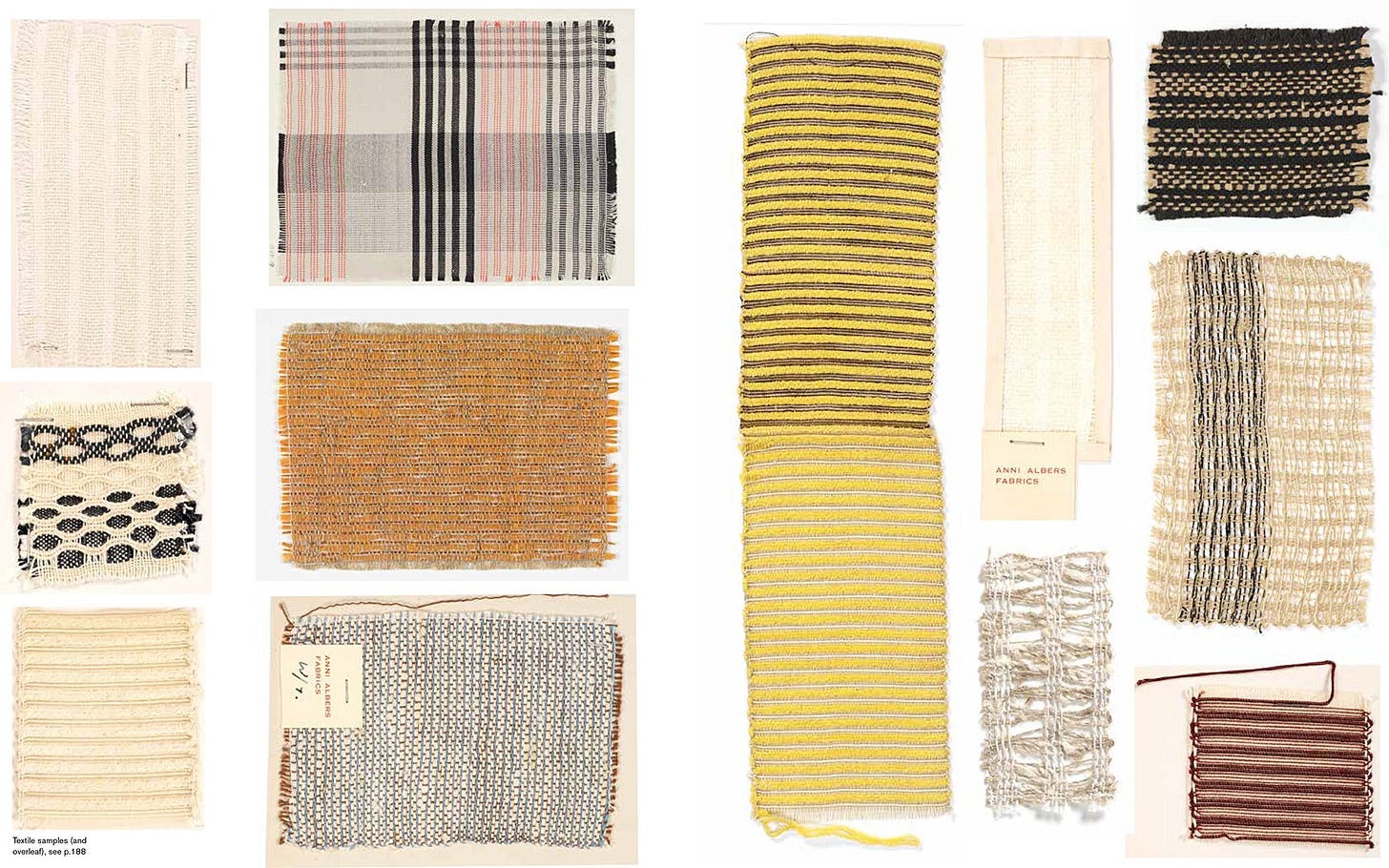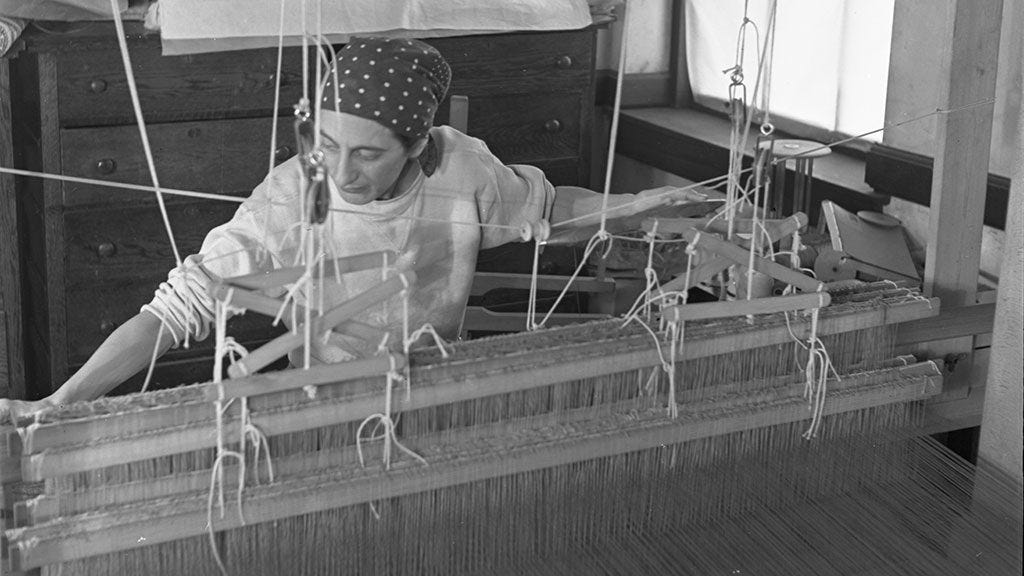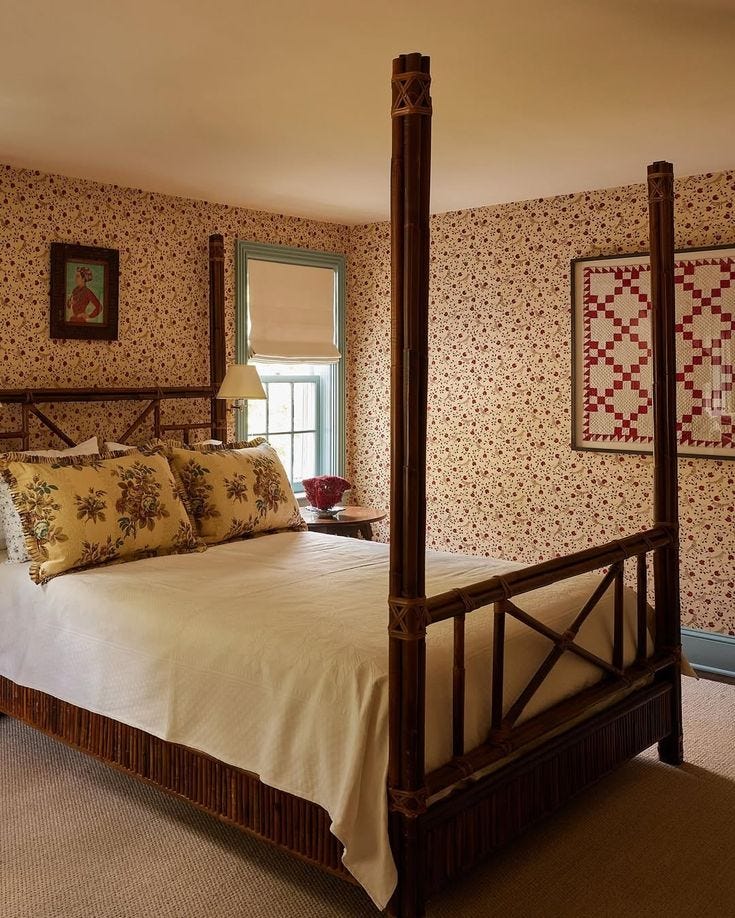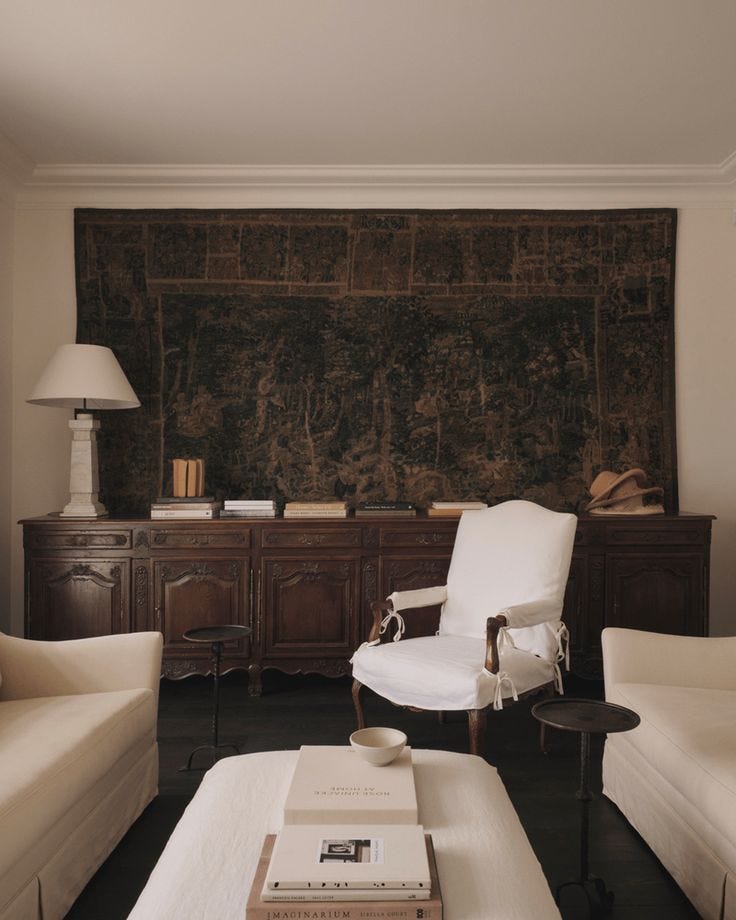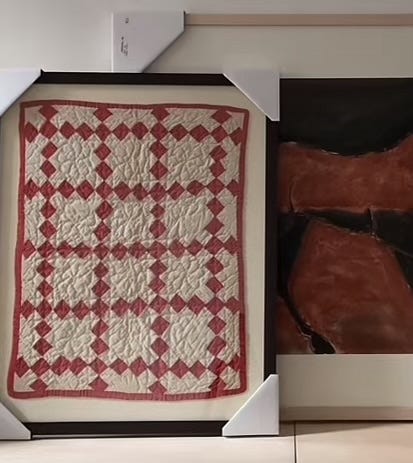Lately I’ve been thinking about how often textiles get overlooked in conversations about art—especially when it comes to art for our homes. Not curtains, sheets, and tablecloths (though I love those as well). I’m talking about textiles as art—pieces meant to be seen, to speak, and to be part of daily spaces.
And stay tuned…if you'd like to skip my mini art history lesson…there are links at the end to over 20 textile works (shown below) that you can purchase (and almost all are very affordable… my favorite piece is $34.00).
A BRIEF ART HISTORY LESSON
If you know a bit about art history, you probably know there’s a long-standing (and outdated) hierarchy of mediums. Oil painting has traditionally been seen as the pinnacle of 'fine art,' while other forms were sidelined.
Photography was considered merely documentation or a hobby — not a legitimate art form — for decades. Even more so, installation, performance, textile, and many other forms of art have always struggled (and continue to struggle) to be taken seriously.
And while we’re at it, I’d like to say—it’s no coincidence that the mediums most associated with women, minority groups, and non-Western cultures—like sewing, quilting, weaving, and silk work—are the ones that have historically been left out of art historical narratives.
But finally, things have started to change.
THE TIDES ARE TURNING
In the last decade or so, institutions (and the general public) have finally begun to acknowledge textiles as art. In 2018-2019, the Tate hosted a long-overdue (their words...) exhibition on Anni Albers (1899–1994). Albers was a pioneer of weaving as an abstract art form, yet her name is still unfamiliar to most outside the small bubble that is the art history world.
(P.S. Woven Histories: Textiles and Modern Abstraction opens at MoMA on April 20th —it looks like there will be lots of Albers. It’s been marked on my calendar…I am so excited.)
Contemporary artists have continued to reclaim textile-based practices. Artist Ghada Amer, for example, uses embroidery as a feminist act of revolt; she calls it “painting with thread,” in response to being taught that painting was art, while sewing was merely a laborious task, a domestic burden for women to carry. Sewing was a skill passed down through the women in her Egyptian and French family — deeply ingrained yet long dismissed.

Anyway, all this is to say: the tides have (finally, sort of) turned. And yet—why aren’t more of us considering textiles for art in our homes?
AT HOME WITH TEXTILES
We are seriously sleeping on quilts (…pun intended lol). And embroidery. And vintage scarves, handwoven silks, embroidered scenes, tapestries, etc.
And no I’m not talking about the mandala tapestry we all had in 2014 from Amazon (iykyk..?).
It all sort of started for me back in September, when Celia and I stumbled upon this incredibly beautiful 15th-century embroidery in London (see image below). From that moment on, I found myself drawn to textile art—especially as something to live with and bring into my home.
Also, as a side note: textiles are one of my favorite things to look for while traveling. They often can fold easily into a suitcase and make for a perfect & chic souvenir (way easier than wrapping up some ceramic mug in sweaters and hoping it doesn’t shatter).
And here (below) is another great example from when I was recently visiting Galerie Was in New York and stumbled upon this amazing oversized tapestry (furthering my obsession).

ART YOU CAN (AND SHOULD) PURCHASE
Anyway, I searched far and wide for pieces to share with you all (literally… this list took me like 10 hours…). I also recently sourced two quilted pieces that I’m hoping to frame and include in future Down The Street collections (follow us on our Insta to stay tuned!).
And before I begin, not to be too redundant, but I have to say it again: it also really does all come back to how these pieces are framed (see my previous post on framing here). Or, in some cases, how they’re hung, draped, propped up, etc.
Without further ado, here are some pieces you can purchase for your home (& I promise this is just the tip of the iceberg):


To access more linked items (both below in this post and in future posts) consider joining us as a paid subscriber.
Keep reading with a 7-day free trial
Subscribe to Down The Street to keep reading this post and get 7 days of free access to the full post archives.






